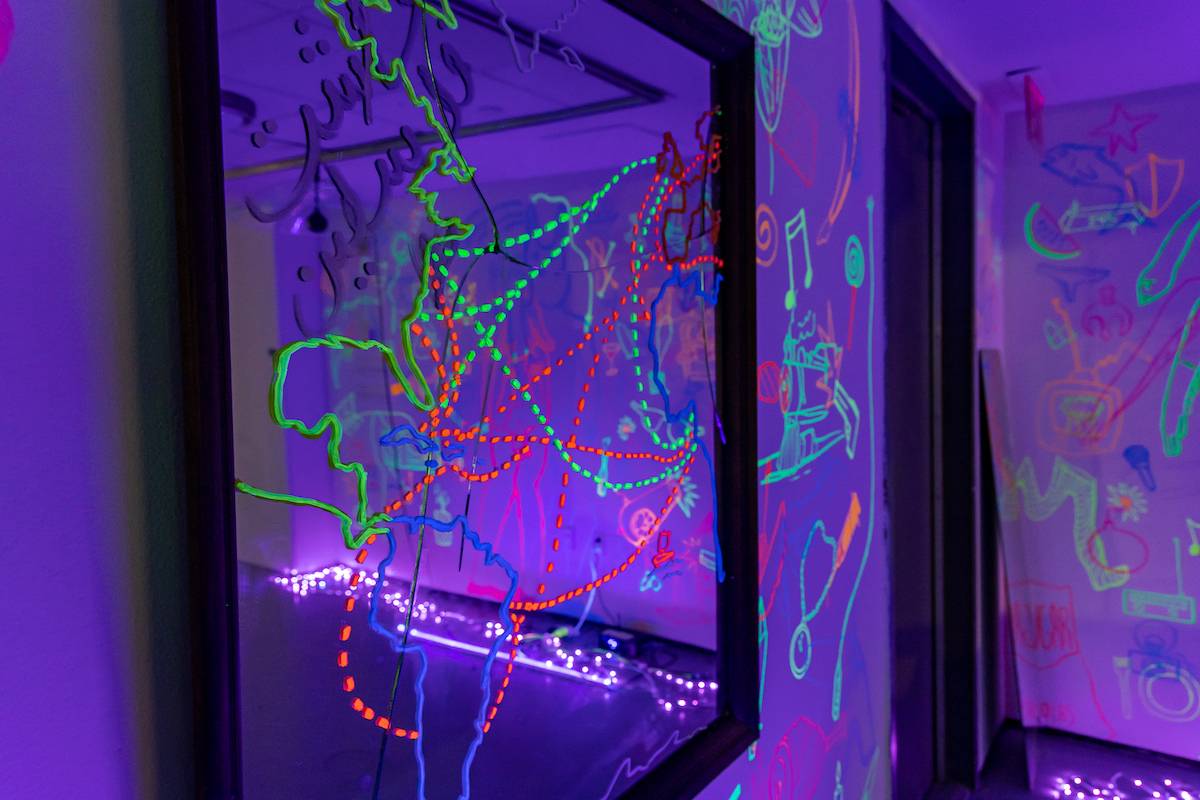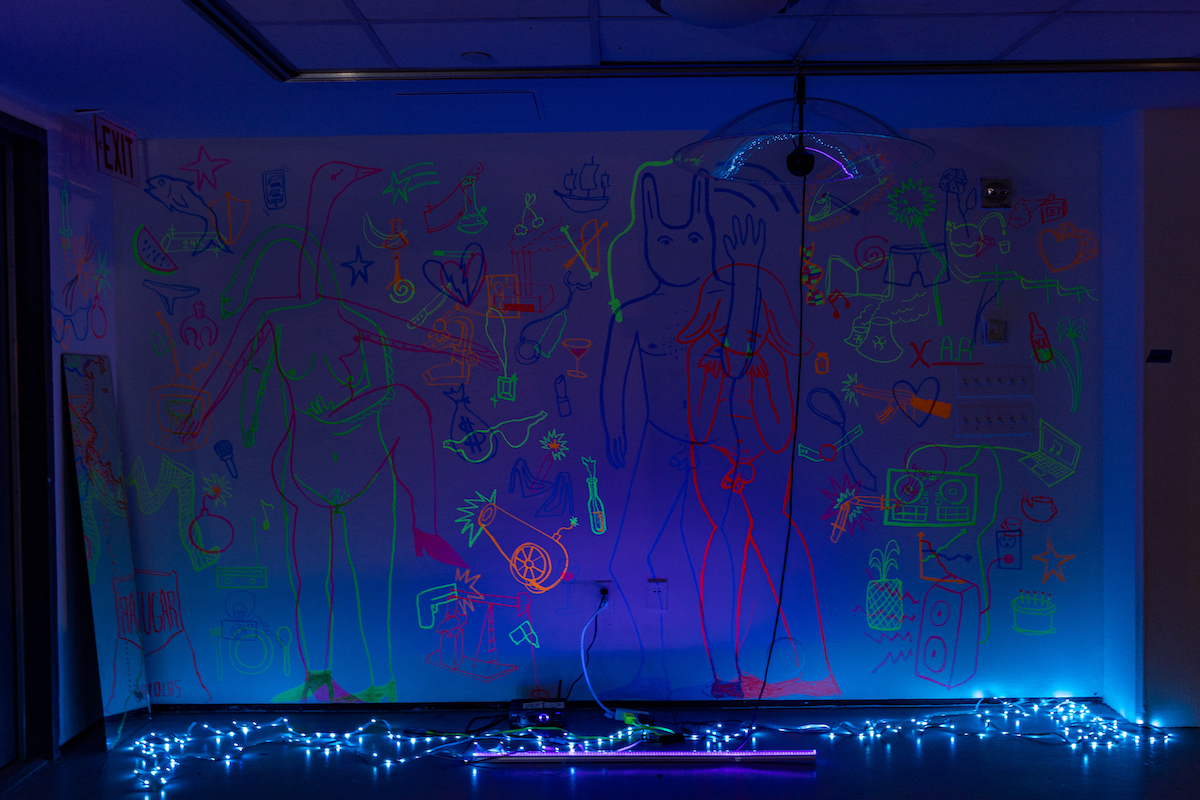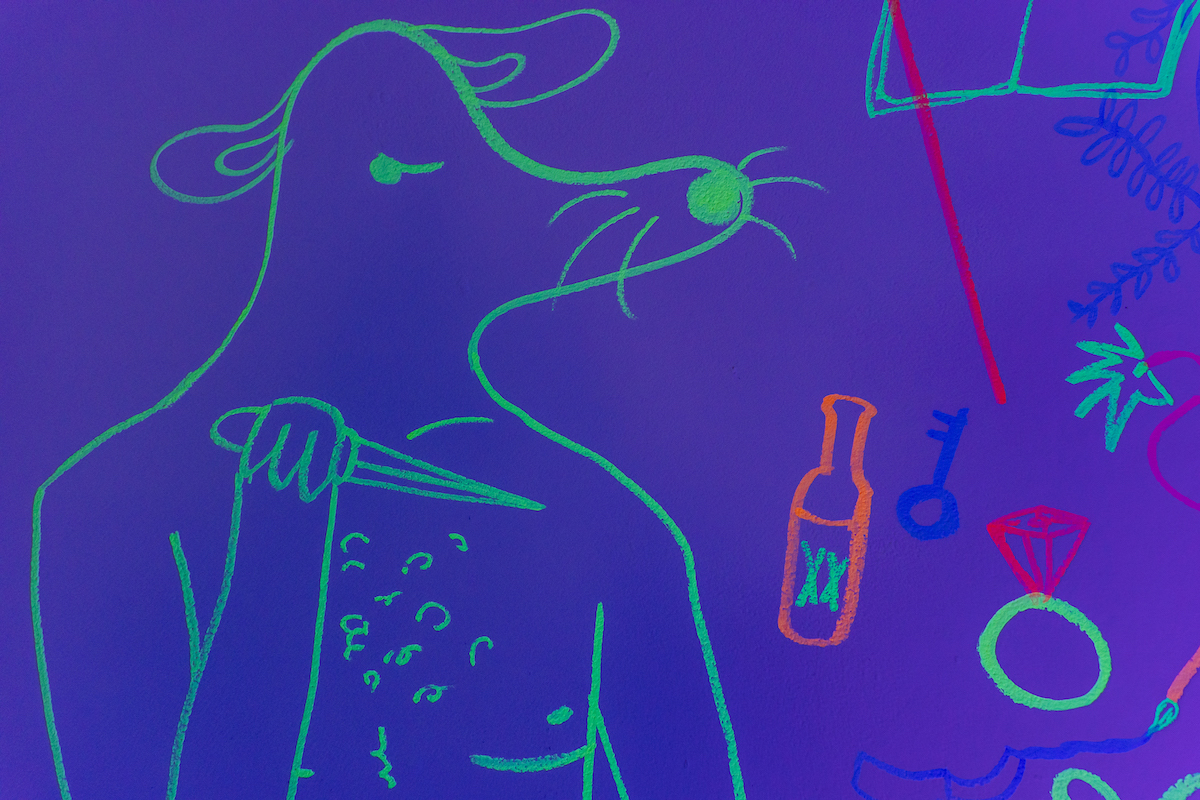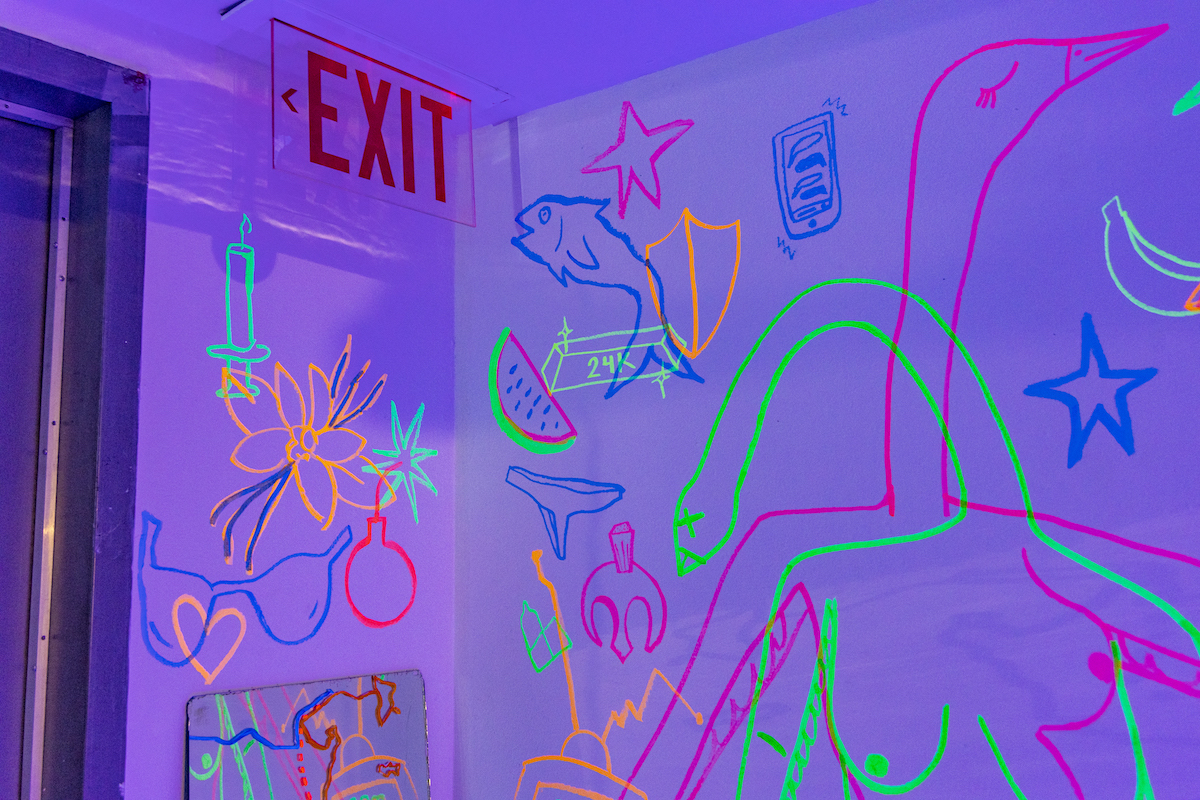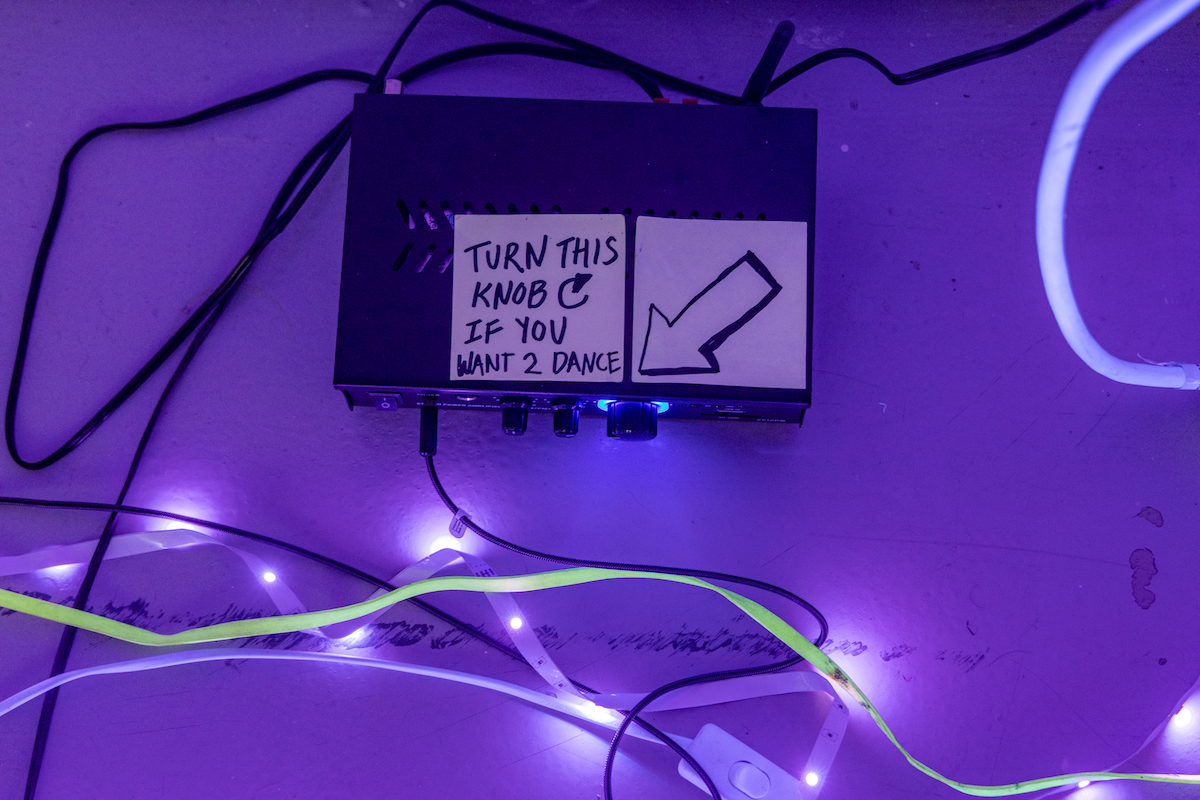Senior Thesis Exhibition 2022
Abeyaz Amir
Chia Amisola
Brice Bai
Merritt Barnwell
Onora Best
Maya Boateng
Ekow Buadu
Anne Chen
Mila Colizza
Alara Degirmenci
Ivory Fu
Pilar Galvan
Matt Herriot
Sidney Hirschman
Neo Khan
Daniel Kyungjae Lee
Sunnie Liu
Laura Padilla Castellanos
Anya Pertel
Sarah Saltzman
Sol Thompson
Julie Tran
Aliaksandra Tucha
Sofia Turner
Xavier
Jieun Yu
Senior Thesis Exhibition 2022
Abeyaz Amir
Chia Amisola
Brice Bai
Merritt Barnwell
Onora Best
Maya Boateng
Ekow Buadu
Anne Chen
Mila Colizza
Alara Degirmenci
Ivory Fu
Pilar Galvan
Matt Herriot
Sidney Hirschman
Neo Khan
Daniel Kyungjae Lee
Sunnie Liu
Laura Padilla Castellanos
Anya Pertel
Sarah Saltzman
Sol Thompson
Julie Tran
Aliaksandra Tucha
Sofia Turner
Xavier
Jieun Yu
Abeyaz Amir
Statement For my thesis, I am trying to comprehend how the legacy of colonialism has shaped our desires, for flesh, greed and war. I am creating an enclosed club space as a means of placing colonial history in the context of freedom: who is allowed to dance, party, and be free? What are the spiritual and mateiral motivations/conflicts that influince our desires for sex, libations and money? How has the course of history shaped our material and bodily needs? The enclosed space houses a mural with three figures whose composition is split with flourescent color highlighting a duality of intention/emotion as they create the club scene. UV and RGB lights flash to a mix of house music centered around the theme of political empowerment and sexual liberation. House music has been used ascross the world in modern day protests against totalitiarian and imperial powers in Columbia, Lebanon, and more. The mural will visually change as the lights change and paint interacts with the lights, highlighting different motifs and figures depending on the beat.
Student

thinking, mirrors, pieces, space, homage, compositions, queerness, ceiling, create, people, big, curtain, artists, point, wall, music, desire, wondering
“I think a lot of this project is going to be experimenting with places I can put the project. In my room, in the pitch black, like you can see everything come to life much better. Like, everything's animated clearly.”
“I was really inspired by Bruce Nauman's neon signs, I'd see them in person a few times. And he was thinking about queerness and nightlife in the 80s and 90s. And thinking about what that meant. And, you know, my project is kind of considering what this means now in a decolonial context, like as we're moving away from gender binaries, sexual binaries. What does that mean, for our sexualities, for our relationships with others? Like, it's changing the way that we define those things as well.”
“I DJ sometimes on campus. I used to do it more last semester, when things were available. And that was really useful for me to find community, you know. House was, like, one method for me to express myself but also for queerness…But also thinking of the Arab Spring riots and also like, uprisings across Lebanon. And in the Middle East. House music was used as the anthem of protest because a lot of it doesn't have lyrics. So like thinking of that, like, abstraction, musical and digital abstraction, that's like kind of homage to like my Islamic upbringing.”
“I think a lot of all of the icons that I'm trying to cultivate are items of desire.”
“I got a great recommendation from Kati Gegenheimer, who was visiting artist. I talked to her about the project, and she said that every good gay club has a mirror. And that's true. So that's kind of what inspired me to do the mirrors as well.”

